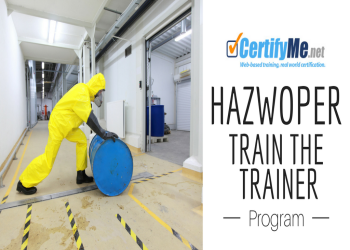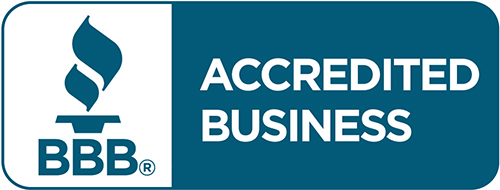HAZWOPER Training: OSHA Course Types, Safety Rules & Certification Guide
Posted by: santiago jimenez on July 8, 2025

HAZWOPER Training Explained: OSHA Requirements, Course Types, and Workplace Safety Tips
In many jobs—like construction, factories, and cleanup work—people handle dangerous materials every day. To keep workers safe, OSHA (Occupational Safety and Health Administration) has rules everyone must follow. One of the most important rules is about HAZWOPER. That stands for Hazardous Waste Operations and Emergency Response. This training teaches workers how to stay safe when working around things like sulfuric acid, ammonia, gasoline, and diesel.
Following these safety rules helps prevent injuries, spills, and expensive problems at work. OSHA also has other rules, like 1910.178, that help keep workplaces safe when using equipment and handling chemicals.
This guide will explain:
- How long different HAZWOPER training courses take
- Who needs HAZWOPER certification
- What dangers come with hazardous materials
- Examples of materials that people may not know are dangerous
To stay safe, workers need training when they start the job and regular refreshers after that. A good safety plan that follows OSHA’s rules keeps people safe and businesses running smoothly.
HAZWOPER Training Requirements
HAZWOPER training is a key part of OSHA’s safety rules for working with hazardous materials. It teaches workers how to:
- Look for and understand risks
- Use PPE (personal protective equipment) the right way
- Clean up safely (decontamination)
- Make and follow an emergency plan
- Work safely around dangerous substances
The amount of training depends on the type of job, how long workers are around hazardous materials, and how dangerous the work is. OSHA offers several course lengths:
- 40-hour for high-risk jobs
- 24-hour for moderate risk
- 16-hour for management and supervisors (in some roles)
- 8-hour refresher courses, required every year
Each course is designed to match the level of danger and the kind of work being done.
40-Hour HAZWOPER Training
The 40-hour HAZWOPER course is the most in-depth training. It’s made for workers who deal directly with hazardous waste or respond to emergencies in high-risk areas.
This course teaches:
- What different hazardous materials are
- How to stay safe on the job site
- What to do if someone is exposed to chemicals
- How to handle spills or leaks
Key skills learned in the course include:
- How to wear and use PPE properly
- How to read and understand chemical labels using the Globally Harmonized System (GHS)
- How to safely clean up using decontamination steps
- How to manage emergencies and follow an incident command system
Companies that provide this training often see fewer accidents. The 40-hour course is required for hazardous waste workers, emergency response teams, and first responders. It also helps meet other OSHA rules like HazCom and supports a strong chemical hygiene plan.
24-Hour HAZWOPER Training
The 24-hour HAZWOPER course is for workers who don’t deal with hazardous materials as often or as directly as those in the 40-hour course. It’s a good fit for part-time workers, supervisors, or anyone who only has occasional exposure to hazardous substances.
This course covers:
- Basics of handling hazardous waste
- How to use safety systems and follow emergency steps
- Proper use of PPE and other safety gear
- How to report and document safety incidents
The 24-hour training helps workers spot and reduce risks by teaching good habits—like checking equipment often and safely throwing away hazardous waste. It’s especially helpful for companies with smaller amounts of dangerous materials or workplaces that run multiple shifts. This training also helps businesses follow OSHA’s safety rules.
16-Hour HAZWOPER Training
The 16-hour HAZWOPER course is for workers who have limited exposure to hazardous materials—like office staff, support teams, or anyone who works near, but not directly with, dangerous substances.
This shorter course covers:
- How to spot hazards and understand the risks
- Basic rules for labeling and classifying hazardous materials
- Simple emergency steps to take if something goes wrong
- PPE basics—what gear to use and how to use it
This training gives workers a strong safety foundation, even if they don’t handle chemicals themselves. It’s often part of a larger safety program and helps boost awareness across the workplace. It also helps cut down on minor accidents by making sure everyone knows the basics.
8-Hour HAZWOPER Training
The 8-hour HAZWOPER course is for workers who have very little contact with hazardous materials. It’s a good fit for office staff, janitors, or maintenance crews who still need to know the basics to stay safe.
This short course teaches:
- Basic safety rules and how to understand hazard signs and labels
- What to do quickly if someone is exposed to a hazard
- A simple introduction to PPE
- Basic cleanup steps and how to use emergency alert systems
Even though it’s short, this training is very important. It helps build a strong safety culture by making sure everyone in the workplace knows what to do in a dangerous situation. It can be used as a first-time course or a refresher to keep skills sharp.
Who Needs HAZWOPER Certification?
HAZWOPER training isn’t just for people who work directly with hazardous materials. It’s also important for anyone who might be exposed or who may need to help in an emergency.
People who should be certified include:
- Workers cleaning up hazardous waste
- Emergency response teams
- Supervisors and managers
- Some administrative or support staff who work near hazardous materials
A company’s safety plan should match the kind of work being done. For example:
- Workers on construction sites, in labs, chemical plants, or factories are at higher risk and usually need the 40-hour course
- Supervisors should be trained so they can lead during emergencies and enforce safety rules
- Workers managing a Chemical Hygiene Plan or cleaning up spills also need proper training
What training a person needs depends on:
- How often they’re around hazardous materials like gasoline, diesel, or organic peroxides
- What their job is, especially if they lead others
- How often accidents or exposures might happen
- What OSHA rules apply to their role
Many companies use a tiered training plan. For example:
- Frontline workers take the 40-hour course
- Supervisors take the 24-hour course
- Support staff get the 8-hour refresher
This way, everyone gets the right level of training and the whole team stays safer.
Common Hazards When Handling Dangerous Materials
Working with hazardous materials can be risky. OSHA’s main goal is to help workers stay safe by spotting and reducing those risks. Here are some of the most common dangers:
- Chemical burns from corrosive substances like ammonia or sulfuric acid
- Spills, leaks, and even fires or explosions
- Strains and injuries from lifting heavy items
- Breathing in toxic fumes or accidentally swallowing harmful chemicals
Some chemicals, like organic peroxides or hydrogen peroxide, can damage the lungs or skin. Others might catch fire on their own if not stored right. These dangers can cause serious injury or even long-term health problems.
To stay safe, workers and employers should follow these steps:
- Store chemicals safely and keep certain ones separated to avoid bad reactions
- Use the right PPE, like gloves, respirators, and suits
- Have strong cleanup procedures for spills
- Practice emergency plans so everyone knows what to do fast
Other important safety steps include:
- Doing regular safety checks and keeping track of all chemicals
- Making sure workers understand their “right to know” about the dangers they face
- Preventing environmental damage, like spills that can harm soil or water
For example, a well-run lab will have a chemical hygiene plan that includes:
- Clear spill response steps
- Special cleanup zones
- Training for workers to give first aid and call for help quickly
These actions help reduce injuries and keep everyone safer on the job.
Hidden Hazards: Common Materials That Can Be Dangerous
Most people know that chemicals like sulfuric acid and ammonia are dangerous. But some everyday materials can also be harmful if not handled the right way—even if they don’t seem risky at first.
Here are some examples:
- Gasoline – Easy to find, but highly flammable. A small spark can cause a fire or explosion.
- Diesel fuel – Less flammable than gasoline but still dangerous, especially to the environment if spilled.
- Organic peroxides – Used in making plastics. These can explode or catch fire without warning.
- Lithium and lithium-ion batteries – If damaged or thrown away the wrong way, they can overheat and catch fire.
- Pesticides and chemical mixes – Even when watered down, they can harm your skin or lungs.
- Composite materials and sticky adhesives – These may release harmful gases (VOCs) or fibers, especially when burned or overheated.
To stay safe, companies should:
- Keep an up-to-date chemical inventory
- Update and review Safety Data Sheets (SDS)
- Do regular risk checks
- Follow the right standard operating procedures (SOPs) for storage, use, and disposal
These steps help workers recognize hidden hazards and stop small problems before they turn into serious ones.
Common Hazardous Materials and Their Dangers
Here’s a short list of common materials that can be dangerous if not handled the right way:
- Gasoline – Very flammable. Must be stored in fire-safe containers and checked often for leaks.
- Diesel Fuel – Can catch fire and pollute the environment. Needs backup containers and a spill plan.
- Organic Peroxides – Can catch fire on their own. Must be kept cool and stored safely.
- Lithium Batteries – Can overheat or catch fire. Must be stored and thrown away the right way.
- Pesticides – Harmful if they touch your skin or you breathe them in. PPE and good airflow are a must.
Knowing these risks helps businesses protect workers and stay in line with safety rules.
Summary Table: Hazardous Materials, Risks, and Safety Tips
| Hazardous Material | Key Risk | How to Stay Safe | OSHA Reference |
|---|---|---|---|
| Gasoline | Fire and explosion | Flame-proof storage, check for leaks | 29 CFR 1910.106 |
| Diesel Fuel | Fire, spills, pollution | Use spill kits, backup containment | 29 CFR 1910.106 |
| Organic Peroxides | Fire from heat or shock | Keep cool, use insulated storage | 29 CFR 1910.119 |
| Lithium Batteries | Overheating, fire | Special disposal, fire-safe storage | 49 CFR 173.185 |
| Pesticides | Skin/lung damage | Wear PPE, ventilate area, train staff | 29 CFR 1910.120 |
Before creating safety plans, check the OSHA standards that apply to your workplace. This table can help you spot risks, train your team, and prepare for emergencies.
Must-Have PPE for Working with Hazardous Materials
Wearing the right PPE (Personal Protective Equipment) helps keep workers safe from harmful chemicals. Here are the basics every team should have:
- Respirators – Keep toxic fumes out of your lungs. Use HEPA filters or special cartridges based on the chemical.
- Chemical-resistant gloves – Protect your hands from burns and rashes. Neoprene and nitrile are strong materials that block harmful liquids.
- Protective suits – Cover the whole body to stop splashes and spills from touching skin. Look for non-porous materials.
- Eye protection – Use goggles or face shields to stop chemicals and flying particles from hurting your eyes.
- Boots – Wear chemical-resistant boots to avoid foot injuries. They should be sturdy, waterproof, and hard to puncture.
Using PPE the right way is one of the best ways to stay safe when working around hazardous materials. It also helps you follow OSHA’s safety rules and avoid costly violations.
Frequently Asked Questions (FAQs)
Q: What does HAZWOPER training teach? A: It teaches workers how to stay safe around hazardous materials. This includes how to wear PPE, clean up spills, plan for emergencies, and follow safety laws.
Q: Who needs to take the 40-hour HAZWOPER course? A: Workers who deal directly with hazardous waste, handle chemical spills, or are part of an emergency response team need this full training. Supervisors also take the 40-hour course.
Q: Why train administrative staff if they don’t handle chemicals? A: Even if they don’t touch chemicals, they should know the dangers and how to stay safe. Training helps build a safety culture where everyone is prepared.
Q: How often do you need to refresh HAZWOPER training? A: OSHA says workers should take a refresher course every year to stay up to date on safety rules and new risks.
Q: What happens if a company doesn’t follow OSHA’s safety rules? A: Not following the rules can lead to:
- Injuries
- Spills and pollution
- Big fines
- Legal problems
- Shutdowns that cost the company money and hurt its reputation
Q: Can different employees take different levels of training? A: Yes. Many companies use a tiered training plan:
- 40-hour course for high-risk workers
- 24-hour course for supervisors
- 8- or 16-hour courses for support staff
This way, everyone gets the right amount of training based on their job.
Q: What other safety steps should companies take? A: In addition to training, companies should:
- Do hazard assessments
- Keep Safety Data Sheets (SDS) updated
- Check equipment often
- Have strong emergency and cleanup plans
Final Thoughts
OSHA’s rules for working with hazardous materials show how important it is to give workers the right training for their role. Whether it’s the full 40-hour course or a short 8-hour refresher, every level of training helps keep people safe.
Good safety programs include:
- The right training for each job
- Clear information about hazards
- Proper use of PPE
When companies take safety seriously, they:
- Prevent injuries
- Protect the environment
- Avoid fines and shutdowns
- Create a safer, more efficient workplace
Training isn’t just a box to check—it’s how you protect your team today and in the future.
Welcome to CertifyMe.net
CertifyMe.net has offered online forklift certification since 1999. With Our Convenient online program. your employess can earn their certification in an hour or less.
Browse Online Certifications:
This low-cost program can be compeleted anytime, anywhere!






